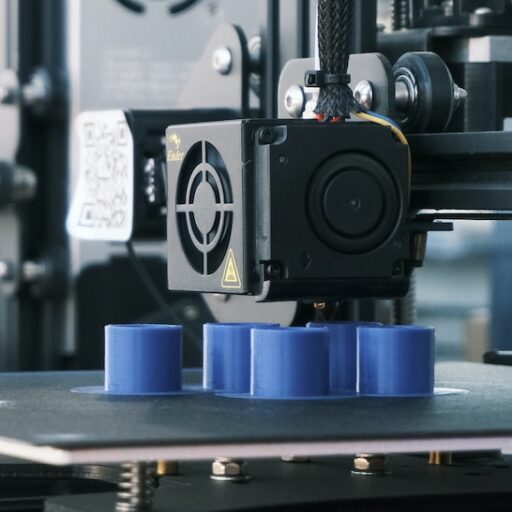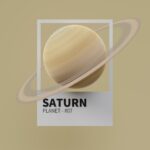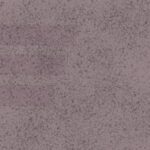Support our educational content for free when you purchase through links on our site. Learn more
💸 Unveiling the Truth: 12 Key Factors That Impact 3D Printer Model Costs [2024]
Remember that time you wanted to print a custom phone case, but you were shocked to learn it cost more than the actual phone? 🤯 The cost of 3D printing can be a bit of a mystery, especially when you’re navigating a world of different processes, materials, and printers. But fear not! We’re here to demystify the process and arm you with the information you need to make informed decisions. Whether you’re a hobbyist dabbling in 3D printing or a business exploring the potential of additive manufacturing, understanding the various cost factors will help you make the most out of your investment.
Quick Answer
Here’s a sneak peek at some of the key factors that affect 3D printer model costs:
- The printing process: Fused Deposition Modeling (FDM) is generally the most affordable, while Stereolithography (SLA) and Selective Laser Sintering (SLS) tend to have higher costs per print.
- Material costs: Simple materials like PLA filament are quite inexpensive, while specialized resins or metal powders can cost hundreds of dollars per kilogram.
- Model size and complexity: Larger, more intricate models require more material and printing time, which can increase the cost.
- Post-processing: Cleaning, sanding, polishing, or painting can add significant costs to your project.
➡️ Ready to start exploring 3D printing options? Check out these popular 3D printer brands:
- Creality: https://www.thingiverse.com/search?q=Creality+Ender+3 | https://www.amazon.com/Official-Creality-Certified-Meanwell-220x220x250mm/dp/B07VMG98ZN?tag=bestbrands0a9-20 | https://www.walmart.com/ip/Creality-Ender-3-3D-Printer-DIY-Kit-3D-Printing-Machine-with-Resume-Printing-for-Home/952458960 | https://www.creality.com/
- Formlabs: https://www.thingiverse.com/search?q=Formlabs+Form+3 | https://www.amazon.com/formlabs-form-3/s?k=formlabs+form+3&tag=bestbrands0a9-20 | https://www.formlabs.com/
- Ultimaker: https://www.thingiverse.com/search?q=Ultimaker+Cura | https://www.amazon.com/ULTIMAKER-Ultimaker-S5-3D-Printer/dp/B07CQCWFWQ?tag=bestbrands0a9-20 | https://ultimaker.com/
- EOS: https://www.thingiverse.com/search?q=EOS+FORMIGA+P+100 | https://www.eos.info/
Let’s dive into the details!
Table of Contents
- Quick Tips and Facts
- The Evolution of 3D Printing: From Prototypes to Production
- Cost and Considerations for Different Types of 3D Printing Processes
- 3D Printer Price Comparison by Process
- Cost Per Part: Calculating 3D Printing Costs
- Outsourced Production vs. In-House 3D Printing
- Considerations Beyond Direct Costs
- 3D Printing Cost Calculator
- Conclusion
- Recommended Links
- FAQ
- Reference Links
Quick Tips and Facts
🤯 3D printing costs have plummeted in recent years. A $20,000 printer in 2010 could cost $500 today! This accessibility has revolutionized prototyping and small-scale production, but it’s still important to consider the full picture before diving into the world of 3D printing.
**💡 Think of 3D printing as a spectrum of options. **You can find everything from DIY kits for tinkering to industrial-grade printers that cost more than a car. Understanding the different types of 3D printing processes will help you determine the best fit for your needs.
**💰 Material costs vary widely between different 3D printing processes. **PLA filament, a common material in Fused Deposition Modeling (FDM), can be bought for a few dollars per kilogram, whereas resin for Stereolithography (SLA) can cost upwards of $100 per liter. Don’t forget to factor in post-processing costs. Depending on your chosen process and material, cleaning, sanding, or painting might be necessary after printing.
**💻 Online platforms like Thingiverse https://www.thingiverse.com/ offer a treasure trove of free 3D printable models. ** You can find designs for everything from simple trinkets to functional tools. However, if you need a custom design, you’ll need to factor in the cost of 3D modeling services.
The Evolution of 3D Printing: From Prototypes to Production
3D printing, also known as additive manufacturing, has come a long way since its early days in the 1980s. Initially used primarily for rapid prototyping, it has become increasingly prevalent in production, healthcare, and even construction.
Here’s how 3D printing has evolved over time:
- Early Days: The first 3D printers were expensive and slow, with limited materials and capabilities.
- The Rise of Desktop 3D Printing: The introduction of affordable desktop printers like the RepRap https://reprap.org/ in the early 2000s democratized 3D printing.
- The Evolution of Materials and Processes: New 3D printing processes emerged, including SLA, SLS, and metal printing, offering improved resolution, material versatility, and performance.
- The Future of 3D Printing: The future holds exciting possibilities for 3D printing, including:
- Personalized Medicine: 3D printing is used to create custom prosthetics and implants, as well as to fabricate drugs and medical devices. https://www.fda.gov/media/109618/download
- Sustainable Manufacturing: 3D printing can reduce waste and emissions, as well as enable on-demand production. https://science.sciencemag.org/media/thought-leadership/
Remember: 3D printing is not a one-size-fits-all solution. Selecting the right process and material for your project is crucial for achieving desired outcomes.
Cost and Considerations for Different Types of 3D Printing Processes
💡 Think of 3D printing processes like different tools in a toolbox. Each has its own strengths and weaknesses, affecting the cost of your project.
Here’s a breakdown of common 3D printing processes and their key considerations:
| Process | Technology | Typical Applications | Pros | Cons |
|---|---|---|---|---|
| Fused Deposition Modeling (FDM) | Extrusion | Prototyping, functional parts, tooling, education, and hobbyist projects | Affordable, readily available materials, versatile, easy to learn and use | Lower resolution, visible layer lines, requires support structures, limited material properties, slow print speed, prone to warping and stringing |
| Stereolithography (SLA) | Photopolymerization | High-detail models, prototypes, dental models, jewelry, and functional parts requiring high accuracy | High resolution, smooth surface finish, accurate dimensions, wide range of materials, good for intricate designs and small details | Materials can be more expensive, post-curing is required, can be more difficult to use than FDM, supports need to be removed carefully, can be prone to resin curing issues |
| Selective Laser Sintering (SLS) | Powder bed fusion | Durable functional parts, tooling, medical devices, and automotive components | High strength and durability, complex geometry, good for large parts, good for batch production, excellent mechanical properties | Limited material options, powder handling can be messy, post-processing can be time-consuming, relatively expensive, can have issues with surface quality |
| Digital Light Processing (DLP) | Photopolymerization | Similar to SLA, but DLP focuses on speed | Faster print speed compared to SLA, good for large-scale production, good for rapid prototyping | Smaller build volume compared to SLA, can be more expensive than SLA, can have issues with resin curing issues |
| LCD/MSLA (Liquid Crystal Display/Maskless Stereolithography) | Photopolymerization | Similar to SLA and DLP, but offers higher resolution and speed | High resolution, faster print speed compared to SLA, good for detailed models and intricate designs, good for dental and medical applications | Smaller build volume than SLA, can be more expensive than SLA, can have issues with resin curing issues |
| Metal Fused Deposition Modeling (Metal FDM) | Extrusion with polymer binders | Metal parts, prototypes, jewelry, and tooling | Relatively affordable compared to other metal printing methods, offers an alternative to traditional metalworking methods | Requires sintering process, less precise than powder-based metal printing methods, limited material options |
| Selective Laser Melting (SLM) and Direct Metal Laser Sintering (DMLS) | Powder bed fusion with lasers | Aerospace, medical devices, automotive components, and tooling | High accuracy, high strength, complex geometry, durable parts, wide range of metal materials | Expensive, requires specialized facility requirements, can have issues with surface quality, slow print speed |
❔ Which process is right for you? That depends on your project’s requirements, budget, and desired results. A simple prototype might be best suited for FDM, while a complex medical device might require the precision of SLA or the strength of SLS.
3D Printer Price Comparison by Process
Here’s a look at the price range for 3D printers within different processes:
| Process | Price Range |
|---|---|
| Fused Deposition Modeling (FDM) | $200 – $10,000 |
| Stereolithography (SLA) | $2,000 – $25,000 |
| Selective Laser Sintering (SLS) | $29,000 – $150,000 |
| Metal Fused Deposition Modeling (Metal FDM) | $100,000 – $500,000+ |
| Selective Laser Melting (SLM) and Direct Metal Laser Sintering (DMLS) | $200,000 – $500,000+ |
**💡 Remember that these are just general price ranges. ** The actual cost depends on several factors, including the brand, features, and specific model.
➡️ Want to see some specific models? Check out these popular 3D printers:
- Creality Ender 3: https://www.creality.com/products/creality-ender-3-v3-se (FDM): https://www.thingiverse.com/search?q=Creality+Ender+3 | https://www.amazon.com/Official-Creality-Certified-Meanwell-220x220x250mm/dp/B07VMG98ZN?tag=bestbrands0a9-20 | https://www.walmart.com/ip/Creality-Ender-3-3D-Printer-DIY-Kit-3D-Printing-Machine-with-Resume-Printing-for-Home/952458960
- Formlabs Form 3: https://support.formlabs.com/s/article/Product-glossary-Form-3 (SLA): https://www.thingiverse.com/search?q=Formlabs+Form+3 | https://www.amazon.com/formlabs-form-3/s?k=formlabs+form+3&tag=bestbrands0a9-20 | https://www.formlabs.com/
- Ultimaker Cura: https://ultimaker.com/software/ultimaker-cura (FDM): https://www.thingiverse.com/search?q=Ultimaker+Cura | https://www.amazon.com/ULTIMAKER-Ultimaker-S5-3D-Printer/dp/B07CQCWFWQ?tag=bestbrands0a9-20 | https://ultimaker.com/
- EOS FORMIGA P 100: https://www.eos.info/en-us/polymer-solutions/polymer-materials/data-sheets/mds-pa-1101?topdf (SLS): https://www.thingiverse.com/search?q=EOS+FORMIGA+P+100 | https://www.eos.info/
❔ Are you considering a printer? 🤔 It’s important to weigh your specific project needs, budget, and level of experience. A simple FDM printer might be perfect for hobbyists, while a professional SLA printer could be ideal for industrial applications.
Cost Per Part: Calculating 3D Printing Costs
**Calculating the cost per part is essential for determining the cost-effectiveness of 3D printing for your project. **
Here’s a breakdown of factors that influence the cost per part:
- Material Cost: This is the cost of the material used to create your part. The price of materials varies widely depending on the process and type of material used.
- Labor Cost: This includes the time spent on design, preparation, printing, and post-processing.
- Equipment Cost: This includes the cost of the 3D printer, maintenance, and consumables (e.g., filament, resin, cleaning solutions).
- Overhead Cost: This includes the cost of utilities, rent, and other expenses associated with running a 3D printing operation.
💡 Here’s a simple example of how to calculate the cost per part:
Let’s say you’re printing a part with:
- Material Cost: $10
- Labor Cost: $5 (for design, printing, and post-processing)
- Equipment Cost: $2 (amortisation of the 3D printer over its lifespan)
- Overhead Cost: $1
Total Cost Per Part: $10 + $5 + $2 + $1 = $18
However, the cost per part is affected by several factors. For example:
- Volume: Printing larger volumes of the same part can reduce the cost per part by spreading out the fixed costs (e.g., equipment).
- Material Choice: More expensive materials will result in a higher cost per part.
- Complexity: Complex parts can require more time and effort for design, printing, and post-processing, increasing the labor cost.
- Post-processing: This can add significant costs, particularly if you need specialized finishing or surface treatments.
❔ Is 3D printing cost-effective for your project? 🤔 This depends on the volume of parts you need, the complexity of the design, and the chosen process and materials. Don’t forget to factor in the hidden costs of post-processing!
Outsourced Production vs. In-House 3D Printing
🤔 Should you buy a 3D printer or outsource your printing needs?
Here’s a comparison of the pros and cons of each option:
| Option | Pros | Cons |
|---|---|---|
| Outsourced Production | Flexibility: You can choose the best process and material for your project. Variety: You have access to a wider range of materials and processes. Scalability: Outsourced manufacturers can easily scale up production to meet your demand. | Limited Control: You have less control over the quality and turnaround time. Communication: There can be communication challenges with the outsourced manufacturer. Cost: Outsourced production can be more expensive for smaller batches or projects with unique requirements. |
| In-House 3D Printing | Control: You have complete control over the printing process and quality. Flexibility: You can quickly iterate designs and experiment with different materials. Speed: You can print parts on demand, saving time and reducing lead times. | Investment: You need to invest in a 3D printer and materials. Expertise: You may need to learn the ins and outs of 3D printing. Limited Options: You may be limited to the materials and processes supported by your printer. |
❔ Which option is best for you? 🤔 The decision depends on your project requirements, budget, and expertise. For small, simple projects, outsourcing might be a good option. If you need more control, flexibility, and speed, in-house printing may be a better choice.
Considerations Beyond Direct Costs
💡 It’s easy to get caught up in the direct costs of 3D printing. However, there are several “hidden costs” that can significantly impact your overall budget.
Here are some factors to consider beyond the cost of the printer and materials:
- Post-processing: This can be a significant cost, particularly for complex parts and processes like SLS and metal printing. Consider the time and effort required for cleaning, sanding, polishing, painting, or other finishing steps.
- Support structures: In some processes, it’s crucial to use support structures that hold the printed part in place. You’ll need to factor in the additional material and labor costs for creating and removing these structures.
- Troubleshooting and Maintenance: 3D printers require regular maintenance and troubleshooting. Consider the time and cost associated with keeping your printer running smoothly.
- Software Costs: You’ll likely need to invest in software to design and print your 3D models. This can range from free, open-source programs to expensive professional software packages.
- Training and Expertise: Learning to use a 3D printer effectively can take time and effort. If you’re new to 3D printing, consider the costs of training or hiring someone with expertise.
❔ Have you considered the “hidden costs” of your 3D printing project? 🤔 By planning for these expenses upfront, you can make better decisions and avoid unnecessary surprises.
3D Printing Cost Calculator
**🚀 Don’t want to spend hours calculating the cost of your 3D printing projects? **
Consider using a 3D printing cost calculator. These tools provide estimates of the cost per part and lead time based on your project specifications.
🏆 Some popular 3D printing cost calculators include:
- Formlabs Cost Calculator: https://formlabs.com/ This calculator is specifically designed for Formlabs SLA printers and provides accurate estimates for parts printed with Formlabs resins.
- 3DHubs Cost Calculator: https://www.3dhubs.com/ This tool allows you to get quotes from a network of 3D printing service providers, making it easy to compare prices and choose the best option for your project.
- PrintAWorld: http://www.printworldtx.com/ The PrintAWorld is a 3D printing service with a simple but effective cost calculator feature. You can easily estimate the cost of your project with its intuitive interface.
💡 Remember that these calculators are just estimates. The actual cost of your project might vary depending on the specific printer, materials, and post-processing requirements.
❔ Are you ready to start exploring 3D printing costs? 🤔 Don’t hesitate to try out a 3D printing cost calculator. These tools can help you make informed decisions and avoid surprises when budgeting for your project.
Conclusion

The world of 3D printing is constantly evolving, offering new possibilities and opportunities for both hobbyists and professionals. While the initial cost of a 3D printer or 3D printing services can seem daunting, it’s essential to consider the long-term benefits and potential cost savings compared to traditional manufacturing methods.
Remember: The cost of 3D printing is influenced by many factors, including the chosen process, materials, complexity of the design, and the required post-processing. By considering all of these factors, carefully planning your project, and using a 3D printing cost calculator, you can make informed decisions and accurately budget for your 3D printing endeavors.
Recommended Links
3D Printers:
- Creality Ender 3: https://www.thingiverse.com/search?q=Creality+Ender+3 | https://www.amazon.com/Official-Creality-Certified-Meanwell-220x220x250mm/dp/B07VMG98ZN?tag=bestbrands0a9-20 | https://www.walmart.com/ip/Creality-Ender-3-3D-Printer-DIY-Kit-3D-Printing-Machine-with-Resume-Printing-for-Home/952458960
- Formlabs Form 3: https://www.thingiverse.com/search?q=Formlabs+Form+3 | https://www.amazon.com/formlabs-form-3/s?k=formlabs+form+3&tag=bestbrands0a9-20 | https://www.formlabs.com/
- Ultimaker Cura: https://www.thingiverse.com/search?q=Ultimaker+Cura | https://www.amazon.com/ULTIMAKER-Ultimaker-S5-3D-Printer/dp/B07CQCWFWQ?tag=bestbrands0a9-20 | https://ultimaker.com/
- EOS FORMIGA P 100: https://www.thingiverse.com/search?q=EOS+FORMIGA+P+100 | https://www.eos.info/
Books:
- “3D Printing for Beginners: Techniques, Projects, and More” https://www.amazon.com/3D-Printing-66-DIY-Projects-Beginners/dp/B09K1TTG82?tag=bestbrands0a9-20
3D Modeling Software:
- Fusion 360: https://www.autodesk.com/products/fusion-360/personal
- Blender: https://www.blender.org/
3D Printing Services:
- 3DHubs: https://www.3dhubs.com/
- Shapeways: https://www.shapeways.com/
- PrintAWorld: http://www.printworldtx.com/
FAQ

How much does it cost to print a 3D model?
The cost of printing a 3D model depends on several factors, including the model’s size, complexity, material, and the chosen 3D printing process.
- Simple models printed on a budget-friendly FDM printer with PLA filament can range from a few dollars to a few tens of dollars.
- Complex models printed on a professional SLA printer with high-resolution resins can easily cost hundreds of dollars or more.
- Large-scale models or parts requiring specialized materials or processes can cost thousands of dollars.
What factors influence the cost of 3D printing a model?
- Model size and volume: Larger models require more material and printing time.
- Model complexity: Intricate designs with complex geometry increase print time and material usage.
- Material choice: Specialized materials, such as metal or high-performance polymers, are significantly more expensive than basic plastics.
- Printing process: The chosen 3D printing process, such as FDM, SLA, or SLS, influences the cost due to material prices, print time, and post-processing requirements.
- Post-processing: Cleaning, sanding, polishing, or painting can add significant costs.
- Labor: The time and effort required for design, preparation, printing, and post-processing can affect the labor cost.
💡 Remember that 3D printing is a spectrum, and costs can vary greatly. It’s always best to get a quote from a 3D printing service or estimate the cost using a 3D printing cost calculator.
Read more about “Top 15 Thingiverse Alternatives of 2024 … ✨”
How expensive is 3D printing material?
Just like the cost of a car varies greatly depending on the make and model, 3D printing materials range in price from a few dollars per kilogram to hundreds of dollars per liter.
- Common materials for FDM printing, like PLA, ABS, and PETG, are relatively affordable, costing a few dollars per kilogram.
- Higher-performance materials for FDM, such as nylon, carbon fiber, and PEEK, can cost several tens of dollars per kilogram.
- Resins for SLA printing are typically more expensive than filaments, costing a few tens to hundreds of dollars per liter.
- Specialty resins, like those for dental applications or those with specific properties, can be even more expensive.
- Metal powders for metal 3D printing are the most expensive, costing hundreds or thousands of dollars per kilogram.
💡 Keep in mind that the cost of materials is just one factor in the overall cost of a 3D printing project. You also need to consider the cost of the printer, consumables, and labor (especially post-processing).
Read more about “3D Printing Market Size: A Comprehensive Analysis … 🖨️”
Is it expensive to own a 3D printer?
The cost of owning a 3D printer varies depending on the chosen technology, brand, and model.
- Simple FDM printers can be bought for as little as a few hundred dollars. However, you’ll need to factor in the cost of materials, consumables, and maintenance.
- Professional-grade 3D printers, such as those used for SLA or SLS, can cost thousands of dollars or more. These printers offer higher resolution, material versatility, and reliability, but they come with a higher price tag and potentially higher maintenance costs.
💡 To determine whether owning a 3D printer is cost-effective, consider the following factors:
- The frequency of use: If you plan to use a 3D printer frequently, the cost per print might be lower than outsourcing.
- The complexity of your projects: Specialized printers and materials might be necessary for complex projects, raising the initial investment cost.
- The desired level of control: If you need complete control over the printing process and quality, owning a 3D printer might be a good option.
Read more about “How Much Does 3D Printing Material Cost in 2024? 💸”
Is 3D printing profitable?
The profitability of 3D printing depends on several factors, such as the business model, the target market, the cost of materials and equipment, and the pricing strategy.
- For personal use, 3D printing can be a hobby or a way to save money by creating custom parts or objects.
- For businesses, 3D printing can be a profitable venture, especially for niche applications, rapid prototyping, or small-batch production.
💡 Factors that can contribute to the profitability of 3D printing include:
- High-value products: Producing high-value, custom-made products can increase profit margins.
- Specialized services: Offering specialized 3D printing services, such as design, prototyping, or post-processing, can differentiate your business.
- Efficient production: Minimizing waste, optimizing print settings, and streamlining workflows can help to reduce costs and improve profitability.
- Effective marketing: Reaching the right target market and creating demand for your 3D printing products or services is key to profitability.
❔ Do you have other questions about the cost of 3D printing? Let us know in the comments below! We’re always happy to help.
Read more about “Is 3D Printing Still Profitable in 2024? 🤔”
Reference Links
- Creality Ender 3: https://www.creality.com/products/creality-ender-3-v3-se
- Formlabs Form 3: https://support.formlabs.com/s/article/Product-glossary-Form-3
- Ultimaker Cura: https://ultimaker.com/software/ultimaker-cura
- EOS FORMIGA P 100: https://www.eos.info/en-us/polymer-solutions/polymer-materials/data-sheets/mds-pa-1101?topdf
- 3DHubs: https://www.3dhubs.com/
- Shapeways: https://www.shapeways.com/
- PrintAWorld: http://www.printworldtx.com/
- PrintAWorld Article: https://prtwd.com/guides/how-much-does-3d-printing-cost/#:~:text=As%20a%203d%20printing%20company,print%20based%20on%20these%20factors.
- Thingiverse: https://www.thingiverse.com/
- RepRap: https://reprap.org/
- FDA 3D Printing Page: https://www.fda.gov/media/109618/download
- Science Magazine Article: [https://science.sciencemag.org/content/3




